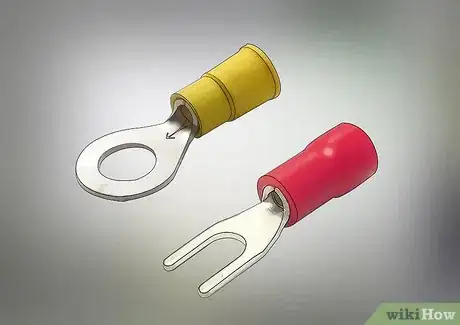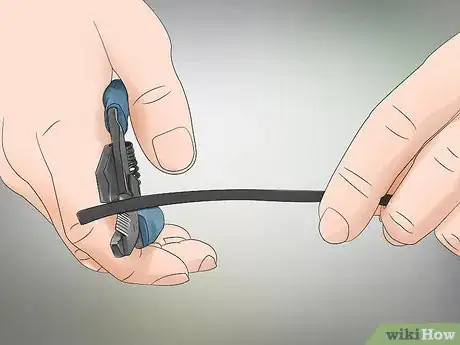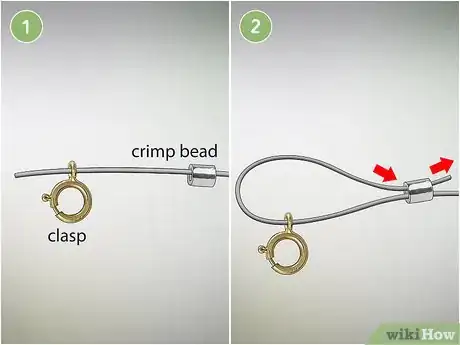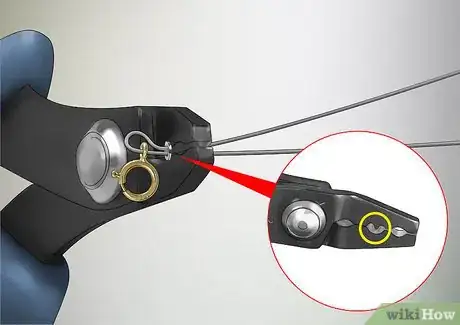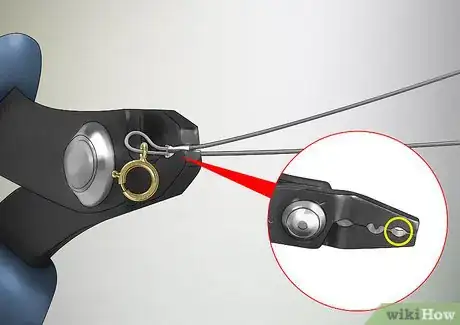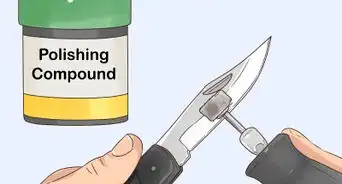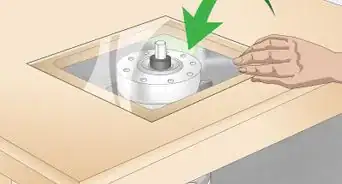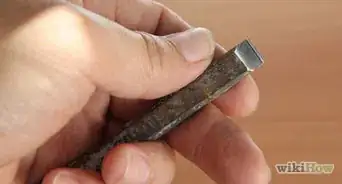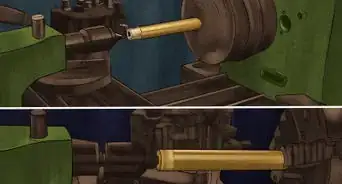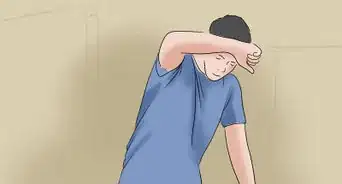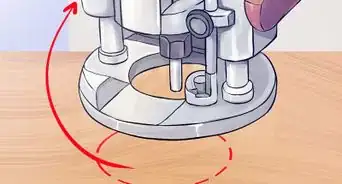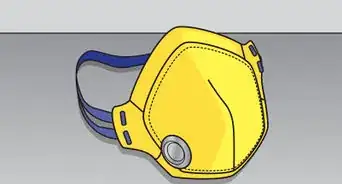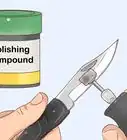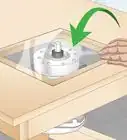X
This article was co-authored by wikiHow Staff. Our trained team of editors and researchers validate articles for accuracy and comprehensiveness. wikiHow's Content Management Team carefully monitors the work from our editorial staff to ensure that each article is backed by trusted research and meets our high quality standards.
This article has been viewed 49,932 times.
Learn more...
A crimping tool is great for cold fusing wires together in electronics projects or jewelry making. In this article, we will walk you through making a permanent, secure connection using a crimping tool.[1]
Steps
Method 1
Method 1 of 2:
Using a Crimping Tool for Electrical Wires
-
1Choose the correct terminal for your project. A terminal is the slightly bulky plastic component at the end of a cord. It usually appears right before the actual plug. For your crimp to work correctly, choose a terminal that’s appropriate for your project.
- For example, you might buy a ring terminal, which is designed for high vibration projects, if adding a digital component to your motorcycle. You might use a fork terminal, designed for non-vibrating equipment, to crimp wires as part of a television repair project. [2]
- You would use a splice, a type of terminal, to join two wires together.
-
2Strip the insulation from your wire. Expose no more wire than the length of your terminal. So if your terminal measures 1⁄4 inch (0.64 cm) in length, remove 1⁄4 inch (0.64 cm) of insulation. [3]
- Your crimping tool may have a place for scoring insulation in order to remove it. Insert the wire into the appropriate nest for scoring and gently work the tool back and forth to perforate the insulation.
- You can also buy a scoring tool, which is specifically designed to perforate insulation on electrical wires.
Advertisement -
3Twist the wires with your fingers. Twisting the wires together makes them easier to slip into the terminal. It also helps create a stronger crimp. After twisting, insert the wires into the terminal.
-
4Insert the terminal into the correct nest of your crimping tool. Some crimping tools come with color-coded nests the match with common connector colors. Others come with wire gauges imprinted on the tool to help you choose the correct nest. Then, squeeze the crimp tool as hard as possible and release to get a tight, long-lasting fuse.
- You might have a ratchet crimping tool, in which case, the tool releases automatically once the crimp is made. You don't have to squeeze it so hard. [4]
Advertisement
Method 2
Method 2 of 2:
Using a Crimping Tool in Jewelry Making
-
1Slide a jump ring or clasp onto your jewelry wire. Then slide a crimp bead onto the wire. Thread a short length of jewelry wire, about 3 inches (7.6 cm), back through the crimp bead. The crimp bead plus the wire threaded back through it secures the jump ring or clasp in place. [5]
- Jewelry wire comes in various thicknesses, so choose a crimp bead big enough to slide your wire through twice.
-
2Push the crimp bead close to the jump ring or clasp. You want the crimp bead close to the jump ring or clasp, but leave a bit of room for those components to move around freely. A little room ensures that the closure will work properly and that the piece of jewelry will be comfortable for the wearer.
-
3Place the crimp bead in the middle crimping tool nest. The middle nest is curved like a shallow "U" and has a point that comes down to crimp the bead in two. Hold the two tails of wire apart and squeeze the crimping tool. Unlike electrical wire crimps, you don’t need to squeeze super hard. The goal is to use the crimping tool to create a bend in the center of the crimp bead. [6]
- Squeezing the crimping tool causes the parallel strands of wire to be separated into two tunnels, one on each side of the crimp bead.
-
4Place the crimp bead on its side at the tip of the crimping tool. The nest at the tip looks like an oval from the side of the tool. Squeeze the tool again to further bend the crimp bead and secure the jump ring or clasp at the end of the wire.
- You can snip off the excess wire where you won’t put beads.
Advertisement
Warning
- Score electrical wires to remove insulation gently. If you cut the wire while you’re scoring the insulation, your connection may not work properly.
- Avoid using pliers as crimping tools in electrical projects. Pliers create poor crimps, allowing moisture to enter the space that’s supposed to be fused. Moisture results in corrosion that can ruin a connection.
- You should also avoid using pliers as crimping tools in jewelry making. Pliers don’t secure the crimp bead properly, which may cause your strand of beads to break prematurely.
References
- ↑ http://www.rfcoaxconnectors.com/technical-crimp-vs-solder.php
- ↑ https://megadepot.com/resource/how-and-why-to-use-crimping-tools
- ↑ https://www.youtube.com/watch?v=Svja8zEcKNQ&feature=youtu.be&t=74
- ↑ https://www.youtube.com/watch?v=xgReOtQhdo8&feature=youtu.be&t=60
- ↑ https://www.artbeads.com/design-studio/how-to-use-a-crimp-tool/
- ↑ https://www.youtube.com/watch?v=Q2zs1qfCFsY&feature=youtu.be&t=150
About This Article
Advertisement
